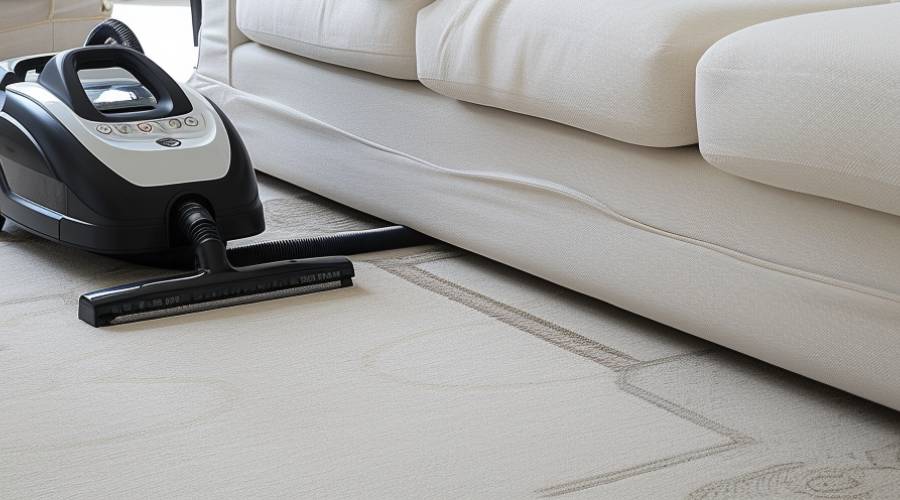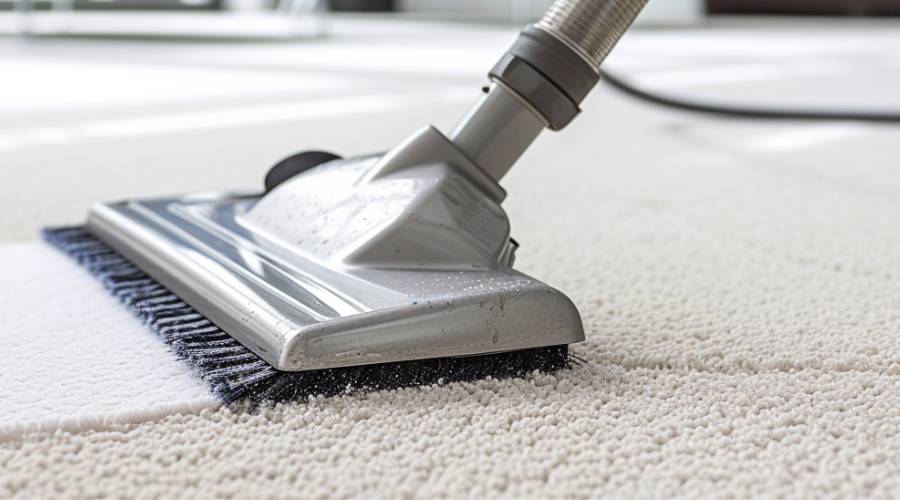How to Clean Carpet
A Step Guide to Deep Clean Carpet By Hand
If you’re reading this, you’ve probably looked down at your carpet or rug recently and felt a little defeated. Maybe it’s the stubborn stain from last week or the layer of grime that’s dulled its colour over the years. We get it, keeping carpeting clean can feel like an uphill battle. However, you can do something about it without hiring expensive professional carpet cleaners for deep steam cleaning services.
This article talks about how you can easily bring life back to your carpets with the right cleaning methods.
Why Clean Carpets Matter
We spend a lot of time walking, playing, and sometimes even eating on our carpets and upholstery. Carpet care and maintenance are essential for a better living experience. But as comforting as floors can be, they also hold onto dust, allergens, bacteria, and all those little spills and pet stains that don’t just disappear on their own.
A clean carpet not only looks better, however it also makes your house and indoor air healthier by reducing allergens and dust mites. Cleaning your carpets is more affordable than hiring a professional carpet cleaning service.
Steps to Clean Your Carpet At Home | Carpet Cleaning Process
1. Gather Your Cleaning Equipment and Products
First things first, you need to get your cleaning supplies together.
Tools and Materials You Need
- Vacuum Cleaner
- Carpet Cleaning Solution, Carpet Shampoo, or Carpet Cleaner
- Scrub Brush
- Warm Water
- White Vinegar
- Sponge, Paper Towels, Microfiber Cloths, or a White Cloth
- Mild Dishwashing Detergent or Bleach
These items are commonly found in most households. Read and follow recommendations on product labels for best results.
2. Start With a Thorough Vacuum
Before you even think about getting your carpet wet, you need to start by vacuuming the entire carpet thoroughly in all rooms. This step is crucial because it lifts away loose dirt, dust, pet hair, and other debris that would otherwise turn to mud when you add water. Make sure you go over the high-traffic area a few extra times in each room, and get under your furniture and into every corner—those hidden spots can hold a lot of dust. If your vacuum cleaner has a beater bar, make sure it’s set appropriately for your carpet type.
3. Spot Cleaning Stains
We’ve all been there—a glass of red wine tips over, the children drop their juice, or your pet has a little accident. This also applies to spilled paint. Spot treat stains is the next step. Here’s one method:
- Blot the stain gently using a damp cloth. Don’t rub the surface, as it can spread the stain and damage the carpet fibre.
- Apply a cleaning solution or homemade mixture directly to the carpet stains. If you don’t have one, mix equal parts water and white vinegar with a drop of dish soap—this effective DIY solutions work wonders. For tougher stains, you might consider using a small amount of hydrogen peroxide.
- Then blot again until the stain lifts.
4. Shampoo the Carpet
You don’t need a professional carpet shampooer or carpet cleaning machine to do this, though renting one from your local hardware store is an option if you have access to a steam cleaner for hot water extraction.
- Mix your effective solution with hot water, depending on the type of carpet you have.
- Use a soft brush to gently scrub the carpet by hand, focusing on areas that look dull or dirty. Work in small sections, using circular motions.
- Avoid soaking it; damp is okay, but you don’t want to overwet it.
5. Rinse and Blot
Once you’ve finished scrubbing, it’s important to rinse out the cleaning solution. Fill a bucket with plain cold water and use a clean cloth to wipe the areas you’ve just scrubbed. This helps extract any soap residue that could attract more dirt over time. Proper rinsing helps extend the longevity of your carpet.
Use white towels to blot and remove excess water and foam. You want to get as much moisture out as possible to help your carpet dry faster and to prevent mould growth.
Drying the Carpet
Drying your carpet properly is key to freshen up your space and avoid musty smells or mildew. If possible, open windows or use fans to speed up the long drying process. You might also consider turning on a dehumidifier if you live in a humid climate.
Pro Tip:
Avoid walking on the carpet surface until it’s completely dry. If you must, try laying down some clean towels or items of cloth to protect the damp fibers.
Cleaning Tips for Keeping Carpets Clean
Now that you’ve got your carpets and furniture looking fresh again, let’s talk about how to keep them that way. Here are some simple carpet maintenance tricks to make sure you’re not scrubbing the same spots repeatedly.
Advice From Professional Cleaner
- Take Off Shoes at the Door: One of the easiest ways to keep your carpet clean is to take off shoes at the door. Shoes track in dirt, soil, grime, and bacteria.
- Use Area Rugs and Runners: These types of coverings are especially handy in high-traffic areas, like hallways and entryways.
- Regular Vacuuming: This is essential; a good rule of thumb is to vacuum once a week, more if you have pets or kids.
- Deal With Spills Immediately: The quicker you get to a spill or discolouration, the easier it is to sanitize and prevent staining and bad odour. For coffee or red wine stains, sprinkling salt can help absorb the liquid before it sets.
DIY Carpet Cleaning Solution Table
Here’s a quick reference table below for making your own carpet cleaning solutions for regular maintenance:
| Home Cleaning Purpose | Ingredients | Instructions |
|---|---|---|
| General Carpet Cleaning | 1 cup white vinegar, 2 cups warm water | Mix in a spray bottle, spray lightly |
| Stain Removal | 1/4 cup white vinegar, 3 teaspoon dish soap | Apply the carpet stain remover, let sit, blot dry with a paper towel |
| Pet Urine & Odours | 1 cup baking soda, 5-10 drops essential oil | Sprinkle baking soda, let sit 15 mins to deodorize, vacuum up |
Overview: How To Clean Your Own Carpets
Cleaning your carpet yourself doesn’t have to be overwhelming. The effective cleaning process is straightforward and rewarding. With just a few simple tools and a little elbow grease, you can make and maintain your home look and feel so much fresher. The best part? You’ll save a bunch of money if you don’t call and hire a professional, and you’ll know exactly what went into cleaning your space—no chemicals, just a fresh floor.
No matter what types of stain or carpet fibres, always keep in mind that you’ve got everything the quality equipment and knowledge to tackle it yourself.


